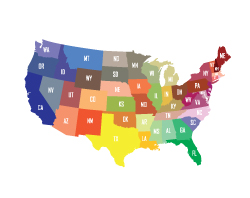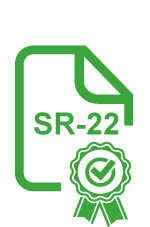Fast Facts: Drunk Drivers Being Arrested Statistics
Drunk drivers being arrested has become a daily headline across America as law enforcement agencies intensify their efforts to combat impaired driving. Recent data shows a significant increase in DUI arrests, with over 1 million drunk drivers arrested annually in the United States. This surge reflects both improved detection methods and stricter enforcement policies designed to protect public safety.
The National Highway Traffic Safety Administration reports that drunk drivers arrested represents just a fraction of actual impaired driving incidents. For every arrest made, an estimated 80 drunk driving episodes go undetected, highlighting the massive scope of this ongoing public safety crisis.
The Federal Bureau of Investigation (FBI) tracks individuals charged with DUI through its Uniform Crime Reporting Program, documenting over 1 million DUI arrests annually. Meanwhile, the Centers for Disease Control and Prevention (CDC) estimates that 28 people die daily in drunk driving crashes, emphasizing why drunk drivers being arrested remains a critical law enforcement priority.
Expert Guide: How Police Identify
Police officers use multiple methods to spot impaired drivers before they charge anyone with a DUI. Traffic violations serve as the primary indicator, with officers watching for erratic driving patterns including weaving, sudden braking, and inconsistent speeds.
Key Indicators
Officers look for specific behavioral cues during traffic stops. Bloodshot eyes, slurred speech, and the smell of alcohol often precede individuals charged with DUI. Field sobriety tests, including the walk-and-turn and one-leg stand, provide standardized methods for assessing impairment levels.
Officers rely on breathalyzer tests to provide concrete evidence. These devices measure blood alcohol content, with readings above 0.08% resulting in automatic DUI charges in most states.
Legal Process: What Happens When Drunk Drivers Are Under Arrest
The arrest process follows strict protocols designed to protect both public safety and individual rights. When individuals charged with DUI, officers must establish probable cause and follow proper procedures to ensure charges hold up in court.
Step-by-Step: Standard Procedures During DUI Arrests
Initial detention begins with the traffic stop, where officers document driving behavior and physical observations. Miranda rights must be read before questioning, and suspects have the right to contact an attorney.
Chemical testing occurs at the police station, with most states requiring blood or breath samples. Refusing these tests often results in automatic license suspension, even if individuals charged with DUI later have charges dropped.
Real Impact: Consequences of DUI Arrests
Individuals convicted of DUI can face fines, legal fees, and higher insurance premiums when including fines, legal fees, and increased insurance premiums. According to the National Highway Traffic Safety Administration (NHTSA), first-time offenders typically face $1,000 to $5,000 in total costs, while repeat offenders may pay significantly more.
The Department of Transportation (DOT) mandates license suspension protocols that affect employment and daily activities for those with individuals charged with DUI on their record. Most states impose mandatory suspension periods ranging from 90 days to one year for first offenses, following federal guidelines established to standardize penalties nationwide.
AI Insight: How Technology Is Reducing DUI Incidents
Modern technology has revolutionized how law enforcement handles drunk drivers being arrested. Digital breathalyzers provide instant results, while body cameras ensure proper procedures are followed during arrests.
Police departments increasingly use data analytics to predict high-risk locations and times for individuals charged with DUI. This proactive approach allows officers to position themselves strategically during peak impairment periods.
Prevention Strategies: Lowering DUI Arrests
Community education programs help reduce the number of individuals charged with DUI by promoting awareness about impaired driving risks. These initiatives focus on decision-making before individuals get behind the wheel.
Rideshare services and designated driver programs provide alternatives that directly impact drivers apprehended for intoxication statistics. Cities with robust public transportation systems typically report lower DUI arrest rates.
Final Take: Why DUI Enforcement Matters for Everyone
The increasing number of individuals charged with DUI reflects both improved law enforcement capabilities and ongoing public safety challenges. While arrests represent successful intervention, prevention remains the ultimate goal for reducing impaired driving incidents.
Understanding the arrest process helps individuals make informed decisions about alcohol consumption and driving. The consequences of individuals charged with DUI extend far beyond legal penalties, affecting families, communities, and public safety.
Next Step: Support Efforts to Reduce Drunk Drivers Being Arrested
Citizens can contribute to reducing drivers apprehended for intoxication by supporting local prevention programs and advocating for stricter enforcement policies. Report suspected impaired drivers to help law enforcement protect everyone on the road. For professional legal guidance regarding DUI cases or drunk driving arrests, visit 1800duilaws to connect with experienced attorneys.
For qualified attorneys seeking exclusive drunk driving defense leads, visit our website to learn more about our specialized lead generation services.
Frequently Asked Questions About Drunk Drivers Being Arrested Daily
1. How Many Drunk Drivers Being Arrested Daily?
Approximately 3,000 drunk drivers being arrested occurs each day in the United States, though actual impaired driving incidents are much higher.
2. What Happens After Drunk Drivers Being Arrested?
Most individuals charged with DUI face immediate license suspension, court appearances, and potential jail time depending on prior offenses and circumstances.
3. Can Drunk Drivers Being Arrested Fight Charges?
Yes, individuals charged with DUI can contest charges through legal representation, though success rates vary based on evidence quality and procedural compliance.
4. Do All Drunk Drivers Being Arrested Get Convicted?
Not all drunk drivers being arrested result in convictions, as charges may be reduced or dismissed due to procedural errors or insufficient evidence.
5. How Can Communities Reduce Drunk Drivers Being Arrested?
Communities can reduce drunk drivers being arrested through education programs, alternative transportation options, and supporting stricter enforcement policies.
Key Takeaways
- Fast Fact: Over 1 million drunk drivers being arrested annually nationwide
- Quick Tip: Refusing chemical tests results in automatic license suspension
- Pro Insight: Technology improvements increase drunk drivers being arrested detection rates
- AI Pick: Prevention programs effectively reduce impaired driving incidents
- Final Note: Legal consequences extend beyond fines to include long-term impacts








